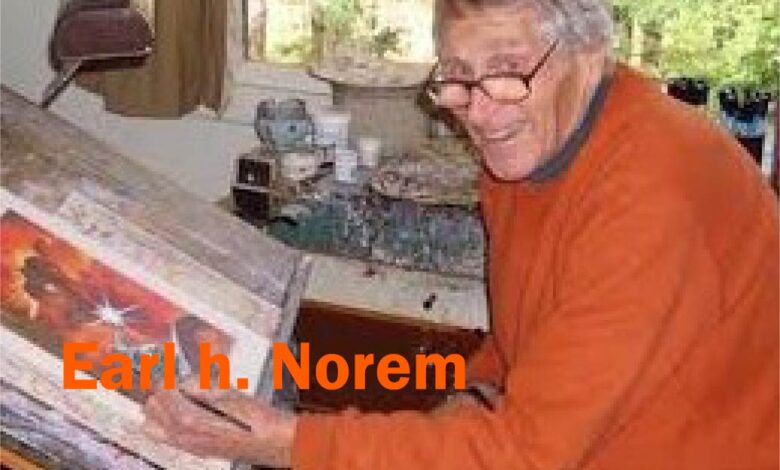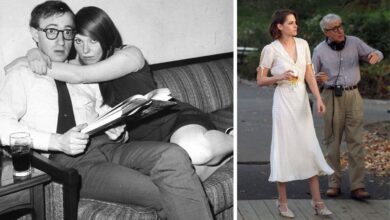Earl h. Norem: The Private Success Story of an American Artist

Earl h. Norem may not be a household name for everyone, but for art enthusiasts, comic book fans, and collectors, he remains an unforgettable figure. His stunning illustrations and action-packed scenes captured the imaginations of many, from readers of men’s adventure magazines in the 1960s to children in the 1980s who idolized his work on toy art. Norem’s journey was one of quiet, consistent success in a field that evolved rapidly over the decades. His influence spanned generations and mediums, from comics to posters, creating a legacy of vibrant, larger-than-life depictions of heroes, warriors, and fantastical worlds.
Early Life and Military Service
Born April 17, 1923, in Brooklyn, New York, Earl h. Norem was a man whose life had taken the road of art due to early life experiences, one of which was serving in the U.S. Army during Second World War action.
He joined the 10th Mountain Division, saw action, and was wounded in the Po Valley campaign in Italy. His time in service would later influence his work, many of his works portraying soldiers and wartime scenes with a realism due to personal experience. After the war, Norem returned home and transitioned into the world of commercial illustration.
Naturally talented for painting, his style marked by dynamic composition and rich detail made him one of those sought-after artists in the world of men’s adventure magazines. Most of these magazines had targeted veterans and working males and most of them had covers depicting a rugged hero who was rescuing a damsel in distress from some kind of danger.
Men’s Adventure Magazines: The Start of a Legacy
Norem’s art was a staple of men’s magazines throughout the 1950s and 1960s. His covers were striking and evocative, generally filled with the drama of danger, action, and heroism. These illustrations became iconic in their genre, capturing the imagination of post-war American men. Paintings for every occasion in acrylics he used were in colors that were grimy, as were the situations undertaken within the stories of the magazine.
The men’s adventure magazine market was rampant, but Norem’s work stood apart for its vibrant colors and its highly detailed, almost cinematic approach. His covers featuring soldiers, gangsters, and beauties were about to become an integral part of the magazine’s appeal. Titles such as “Man’s Life,” “Stag,” and “True Men” used his artwork on the covers to stir sales in a time when competition was stiff for attention from readers.
The Shift to Comics: A New Chapter with Marvel
As the 1970s took their hold, the market for men’s adventure magazines was narrowing. However, his ability to adapt and innate talent made Norem continue to work without a glitch. He soon did comic books, wherein his art will reach an entirely new audience.
He soon found himself a regular contributor to Marvel Comics, turning out dramatic covers for the likes of Savage Sword of Conan, Tales of the Zombie, Planet of the Apes, and The Rampaging Hulk. Much of Norem’s work for Marvel shared the same kind of bold, dynamic sense that initially brought him fame in the magazines. His compositions were full of muscled heroes, fearsome monsters, and storybook landscapes.
In particular, his covers for Conan were to become among the most iconic interpretations of the character, rivaling even those from the legendary fantasy artist Frank Frazetta. Norem’s Conan the Barbarian pieces really stood out for their powerful energy, raw brutality, and heroism imbuing into Robert E. Howard’s character. With the capability of depicting fantastic scenes in memory, emotional intensity makes him a favorite of comic book readers, especially among fans of fantasy and science fiction genres.
Masters of the Universe and Toy Art Fame
To many who grew up in the 1980s, Earl h. Norem is best remembered for toy artwork, in particular, He-Man and the Masters of the Universe. His paintings of He-Man were brilliant in color and very much larger-than-life, capturing the world of Eternia as vivid and fantastic. Be it He-Man against Skeletor or some of the landscape views of the planet, Norem’s name became attached to these characters.
Norem did promotional art for toy lines such as G.I. Joe and Transformers. His art wasn’t just something that could sell toys but part of the central identity for those franchises that made them feel far more epic and meaningful to children who played with them. The posters, packaging, and promotional art that he designed helped define the visual feel of ’80s pop culture, and because of that fact, his work remains near and dear to the fans of that era.
A Humble Artist in a Changing World
Despite his commercial success and the adoration of his fans Earl Norem remained a humble soul, who thought of himself as a working artist, one who was only happy to have steady work and the opportunity to create. He continued working steadily until 2005, when arthritis finally forced his retirement. Even in retirement, he continued to paint endlessly for his own amusement and for his grandchildren, his love for creating never faltering.
With Norem’s death in 2015 at the age of 92, a legacy remained. His work continues to live on through celebration by collectors alike, comic book enthusiasts, and toy fans. His place in the visual culture of the 20th century from men’s adventure magazines to comic books and toy art cements his position as one of the great American illustrators of his time.
A Lasting Legacy
His work has etched an indelible mark on successive generations, and his artistic influence remains with us to this day. Earl h. Norem was one of the few links between the world of pulp art and modern comic book illustration, and his unique melding of realism with fantasy imagination really remains singular in his own name.
From the gritty covers of men’s magazines to the colorful, heroic scenes of Masters of the Universe, Norem left behind a body of work that continues to inspire new artists and delight fans around the world. Few can move from one medium onto another with such grace while their style is intact. Though he may not have strived for fame, Earl h. Norem achieved something far more lasting: a place in the hearts of those who grew up with his art, whether they first saw it on the covers of magazines, comic books, or the packaging of their favorite childhood toys.
But, with nostalgia for the 1980s and the Golden Age of Comics growing yearly, his work continues to be rediscovered and loved by new audiences. His legacy is sealed as a master in the line art field, and his art remains an integral, colorful part of American pop culture history.





